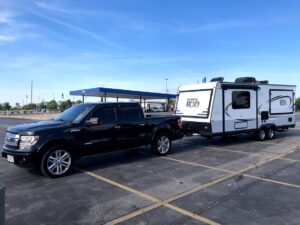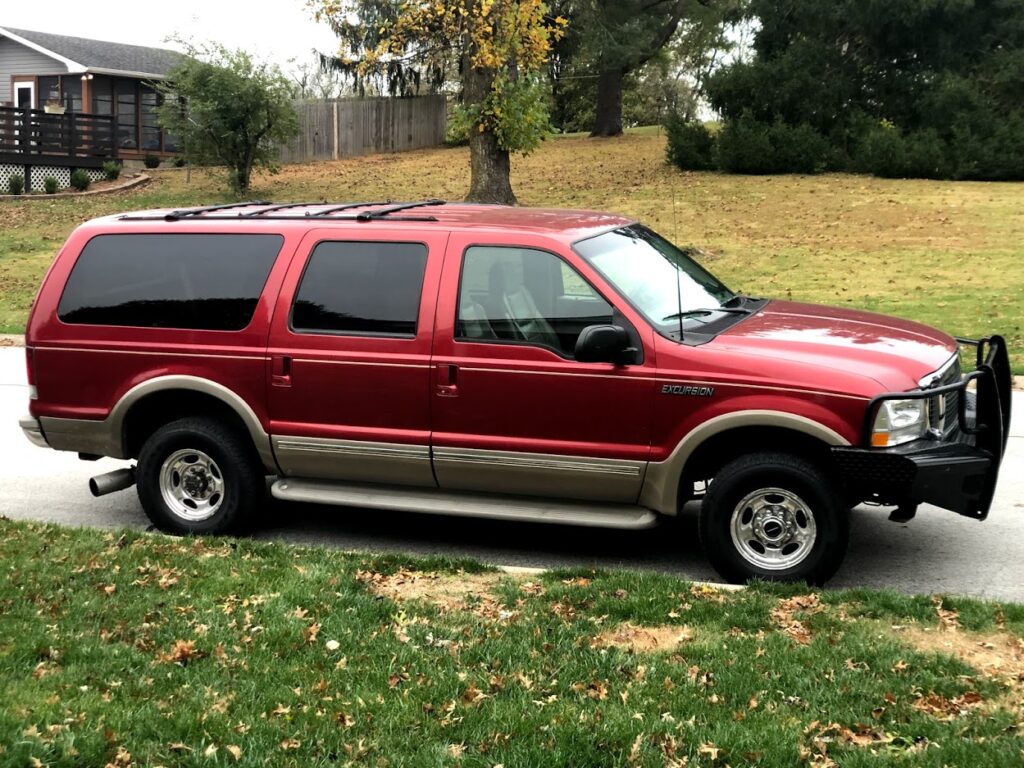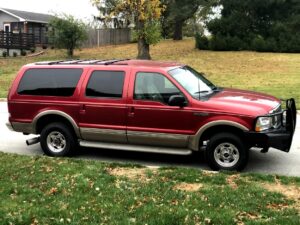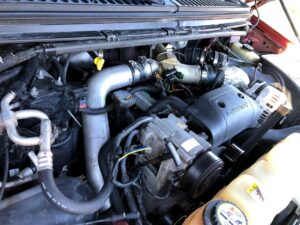When we first decided on pulling the trigger on an RV, one of the last concerns we had was the capability of our tow vehicle. At the time we had a 2013 F-150 supercrew with the immensely powerful EcoBoost V6. The truck was a Limited model with every bell and whistle, which we thought translated to one of the best towing F-150 Ford made. We were wrong.
What was wrong with the F-150?
 Loaded up, our Rockwood Roo weighs in the neighborhood of 6,000 lbs. Properly equipped, an F-150 can tow in the neighborhood of 10,000 lbs with plenty of payload capacity to carry your family and your gear to its destination safely. Unfortunately, that properly equipped F-150 was not our truck. More than likely, it is not yours either as most half tons are not optioned with the correct gearing optimized for towing. If you have doubts about your vehicle and would like to learn more, check out our article on choosing the right tow vehicle.
Loaded up, our Rockwood Roo weighs in the neighborhood of 6,000 lbs. Properly equipped, an F-150 can tow in the neighborhood of 10,000 lbs with plenty of payload capacity to carry your family and your gear to its destination safely. Unfortunately, that properly equipped F-150 was not our truck. More than likely, it is not yours either as most half tons are not optioned with the correct gearing optimized for towing. If you have doubts about your vehicle and would like to learn more, check out our article on choosing the right tow vehicle.
Our Limited F-150 sticker indicated a max payload of 1,145 lbs. Subtracting 500 lbs for the trailer tongue weight and 500 lbs for occupants and cargo did not leave us any wiggle room. In short, we were maxing out our vehicle. For the most part our truck did not stress driving to camp sites in the Midwest. Introducing elevation, grade, and heat while driving from Missouri to Glacier National Park opened our eyes to its limits. Even with a full service and fresh fluids in all components, it struggled. By the time we passed through the Dakota’s I was glued to my transmission and engine temp gauges. Pulling from the Teton’s we were thrown into limp mode more than once. For those lucky enough to not know, limp mode is a failsafe that cuts engine power and allows you enough time to get to the side of the road before overheating or severely damaging your vehicle. The truck simply did not have the proper options checked in terms of gearing and suspension to handle the weight. This led us to purchasing a 2002 Ford Excursion with a hair under 240,000 miles.
Why we chose the Ford Excursion?
Power and Reliability
The Ford Excursion came with the most reliable diesel motor in the early years, a 7.3 liter diesel V8 pushing out 500 lb ft of low end torque. This is a motor Lindsey and I are quite familiar with as her Dad has a 7.3 diesel in his 2001 Superduty. His motor has been worked hard and just turned 350,000 with no signs of slowing down. Properly maintained, the 7.3 can run into the 500,000 range.
Seating Capacity
We often fill our campers max sleeping capacity of 8 and wanted a vehicle that could bring the whole clan. The Excursion we chose seats 8 and can go up to 9 with a swapped front bench seat. Our F-150 with front bucket seats maxed out at 5 which necessitated a second vehicle in many of our outings. Additionally, we would want nothing more than to grow our family in the years to come so all the extra seats can’t hurt!
Suspension
The Ford Excursion is the largest SUV ever sold in the US. It was built on a super duty frame and most were rated to tow at least 10,000 lbs. Our 4WD model came with front and rear leaf springs that are deigned to carry loads with ease. These springs are also easily serviceable and upgradable for an even better towing experience.
Affordable
New heavy duty trucks or full size SUV’s can get into the $60,000 price range with ease. We RV to de-stress and we worried adding a payment for a $60,000 vehicle would be a detriment to that. We picked this truck up for under $10,000 cash. Every month without a payment we can put money in the bank for any repairs that are needed down the road and hopefully some extra into savings for a rainy day.
What Could go Wrong?
Anything! The vehicle is almost 19 years old at the time of this writing. The upside, because it is 19 years old we know many of the common problems and what to watch for. No vehicle is bulletproof, even if paired with the legendary 7.3 diesel.
Engine
The most common repair item on the 7.3 with our mileage tends to be the injectors. The parts alone can run around $1,000 and if paying a shop to replace, can become burdensome on the wallet. Lucky for us, the previous owner swapped them out right at 200,00 miles. Other items we will regularly watch for will be turbo issues and oil leaks. Otherwise, regular maintenance and love will go a long way to keeping this torque monster running.
Transmission
This one is a given. The 4 speed automatic (4R100) paired with the 7.3 is a turd. These transmissions are known for failure, especially if the motor has been modified to create additional power. Given the previous owner had an Edge programmer installed means that trans was likely ran hard. Going into the purchase we expect a rebuild in the next year as a worse case scenario. On the bright side, this auto can easily be upgraded internally to outlast and outperform the original. The cost is not a drop in the bucket at around $4,000 to get this unit built up at a reputable shop, but worth it to us for the years of service it will provide.
Suspension
Put 240,000 miles and nearly 20 years on any vehicle and handling will suffer. The Excursion may have a heavy duty frame and powertrain, however, it came with a slightly softer suspension than its F250 sibling. Most will tell you Ford wanted to make it ride smoother for the masses which makes sense, however, we are not the average SUV buyer. One of the first things we are going to tackle is the suspension. A lovely clunking noise was evident under the drivers foot during the test drive which is indicative of bad bushings, tie rods, or a multitude of other things. Additionally, early Excursions were not fitted with rear sway bars which can make them wallow back and forth when towing heavy loads or taking hard corners.
What’s next?
We are going to make this Excursion the ultimate family tow rig! Over the next several months our plan is to go through and upgrade the suspension and any other items we find during our initial towing test that could be deemed unsafe or annoying. From there, the possibilities are only as far as our wallet.



